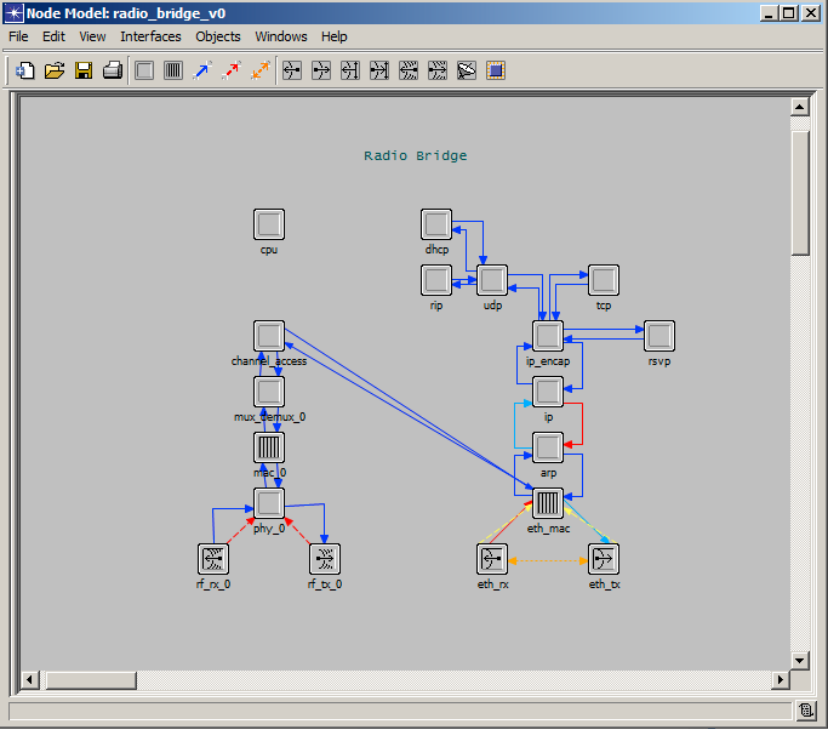The Ethernet Bridge Model supports radio development of smart bridge protocols and shared channel access modes within the OPNET modeling and simulation (M&S) environment.
A bridge operates by determining whether incoming data (or traffic) from a host device is to be routed to a forwarding address or discarded to and from the wireless network. Packets of data received by the bridge carry the destination address, Ethernet frame type, and protocol type which is read by the bridge and deciphered accordingly.
Smart bridging is a necessary technology for wireless networks which limits Ethernet packets transmitted over the RF interface from the wired interface to only packets destined for known host devices passively or actively learned from the network, packets necessary for network discovery and management, or packets filtered by Ethernet frame type. This technology reduces the bandwidth requirements over the RF spectrum to only necessary messages and allows the network device’s host facing interface to be on a noisy host local network.
The Ethernet Bridge Model supports the development within the OPNET environment of Smart Bridging algorithms and a Media Access Control (MAC) sublayer that provides addressing and channel access control mechanisms that make it possible for several hosts and network nodes to communicate within a multiple access RF network.
Advantages of Smart Network Bridge and MAC layer technologies includes:
- Prevents bandwidth waste.
- Reduces network traffic on a segment by subdividing network communications.
- Increase the available bandwidth to individual host devices because fewer nodes share the limited wireless spectrum.
- Reduce collisions over the RF media.
- Extends a network by acting as a repeater to extend network length.
- Links dissimilar Network Transmission Segments.
The main advantages of modeling and simulation include:
- Study the behavior of a system without building it.
- Results are accurate in general, compared to a purely analytical model.
- Help to find unexpected phenomenon and behaviors of the system.
- Easy to perform “What-If” analysis.
- Testing a system at component levels difficult if not impossible to model with actual hardware.

